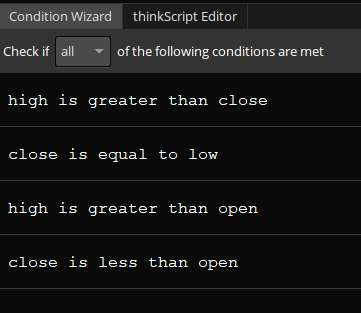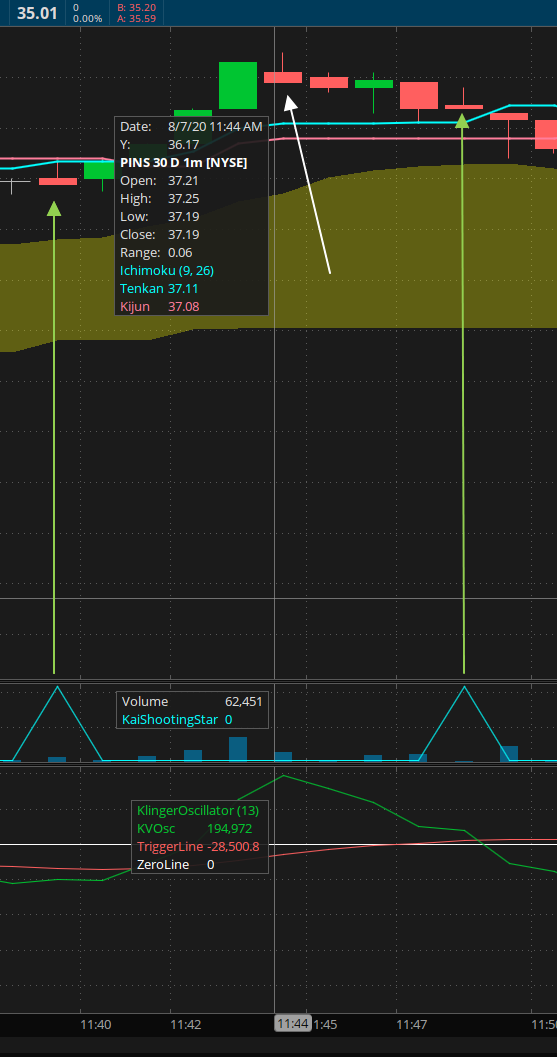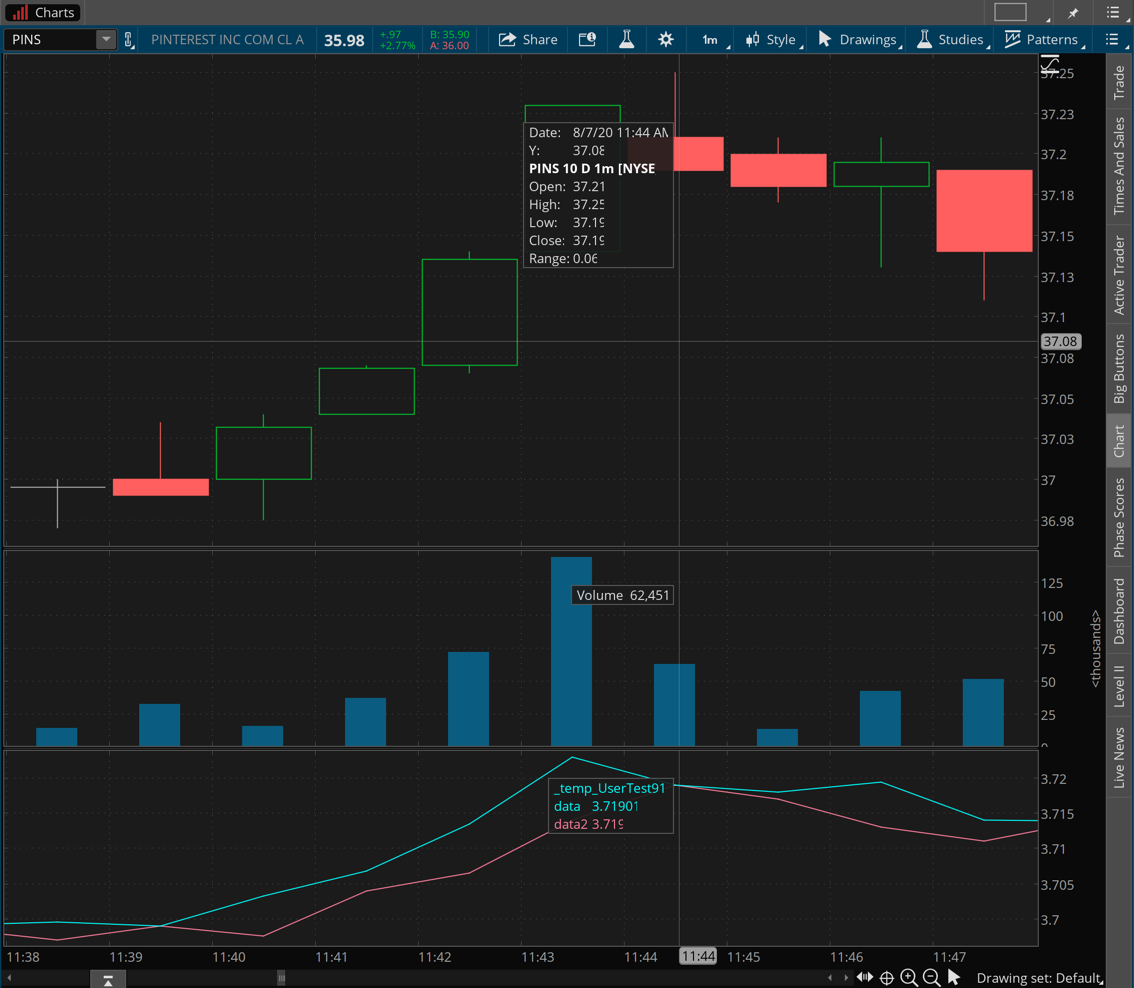Based on further details provided in the comments section of my original answer I understand exactly what it taking place here. The code is working exactly as it was designed. The problem is that many stocks today are still trading in fractions. Many fractional values cannot be accurately displayed on the chart, where prices are rounded to the nearest penny.
How do we discover this?
First is to break the code apart into individual pieces. The most likely failure point is "the close is equal to the low". So we create a chart study to test this:
plot data = close == low;
When plotted on the section of the chart in question we find it returns false for candle you marked with a white arrow. Even though the values displayed on the chart seem to be exactly equal. Rest assured, they are not. Otherwise that line of code would evaluate to true for that candle.
The next trick is to discover a way to display the true value for the close and low of that candle. This is magic:
declare lower;
plot data = close * TickSize() * 10;
plot data2 = low * TickSize() * 10;
You don't learn to look for stuff like this or how to uncover the truth without having spent several years writing custom code for others. So don't feel bad that you totally missed this.
Screenshot below shows the chart with this study applied. Notice the values of the red and blue lines. Off by only the smallest amount. Real value of the close is 37.1901 while the real value of the low is 37.1900. Just missed it.
Now that we understand what is happening, how on earth do we fix this?
We apply rounding so that the two values will always match exactly when they are within less than a penny of each other.
declare lower;
plot data = Round(close, 2) == Round(low, 2);



